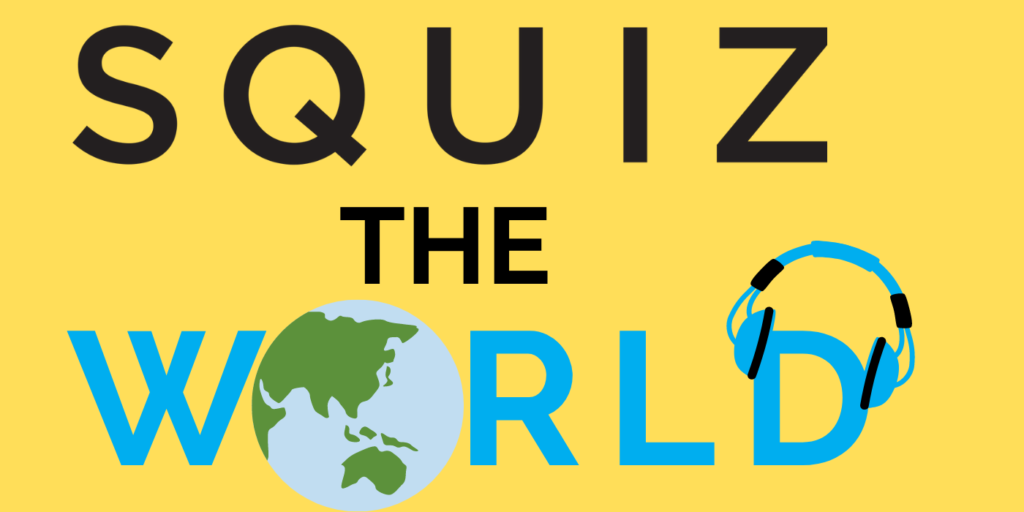
Squiz the World goes to… Germany
LINKS
Homepage of Castle Neuschwanstein (in English): https://www.neuschwanstein.de/englisch/palace/index.htm
A kid explains the Berlin Wall (warning: includes reference to 200 people dying trying to cross) https://www.youtube.com/watch?v=EWT5FveT_Pg
Pictures showing the rise and fall of the Berlin Wall: https://edition.cnn.com/2019/11/09/europe/gallery/berlin-wall-rise-fall-grm-intl/index.html
Recipe for Rote Grutze: https://www.internationaldessertsblog.com/german-rote-grutze-red-berry-dessert-with-cream/
EPISODE TRANSCRIPT
Each week, we give the world globe a spin, and see where we land. Then we take the kids of Australia on an audio excursion to visit that country and its people.
I’m Amanda Bower, and today on Squiz the World we’re visiting Germany, a country of 83 million people on the continent of Europe. In Australia, there are almost one million people with German ancestry – meaning their parents, or grandparents, or great-grandparents were German—and another 100,000 people who were actually born in Germany. Are you one of them?
In 2021, Germany got a new leader for the first time in 17 years, after Chancellor Angela Merkel retired. And Olaf Scholz, who has taken over, has had his work cut out for him, dealing with the war in Ukraine, climate change, and of course Covid. So it seems to us to be the perfect time to find out a bit more about this economic powerhouse of a nation … Strap yourselves into the Squiz Kids Super Fast Supersonic Jetliner as we take off and take a squiz at Germany…
Just the Facts
Germany sits in the heart of western Europe. The size of Germany has changed over more than 2000 years of wars, alliances, and negotiations, and its current borders are only 32 years old. Germany was divided into East and West after World War II – more on that soon – and only unified in 1990.
Maybe some of you have been to Germany, or seen pictures or videos from there. Actually, if you’ve ever seen a Disney movie, you’ve seen something from Germany!
The castle Neuschwanstein, built high on a hill in the German state of Bavaria, was Walt Disney’s inspiration for Sleeping Beauty’s castle.That’s the one you see at the beginning of every movie. King Ludwig II, who was 18 years old when he took the throne and often referred to as the fairy tale king, built it. It was opened to the public only seven weeks after he died, in 1886, and is now one of the biggest tourist attractions in Europe. Take a look at the pictures in your episode notes, and I’m sure you’ll understand why it feels like you’re in a fairy tale at Neuschwanstein!
Whenever you travel, it’s important to learn a few words in that country’s language. It’s a great way to show respect. So, let’s….
Learn the Lingo
In Germany the official language is German, or – as the locals call it – Deutsch. There are lots of local dialects – someone from the north sounds really different from those in the south.
We’ve got our friend Jakob here to teach us how you greet someone in what’s known as High German – the kind of German you’ll hear on the TV and radio:
Guten Tag.
That literally means “”Good day””. Go on, you give it a try! Guten Tag.
People are always really grateful when you just try to speak their language. They may even thank you for it. Hey, Jakob, how do we say thank you?
Danke Schön
Hmm, that “”ö”” sound is tricky, isn’t it? It’s written as an o with two dots on top, called an umlaut. Danke schön to you, too, Jakob!
Now that we can communicate a little bit, it’s….
Time for School
Kids in Germany start school when they’re six years old. They don’t have to wear a uniform, but they do have to be at school pretty early in the morning – around 7:30 or 8. That sounds a bit painful, but it pays off at lunchtime, when they’re finished for the day! Imagine that!
Some kids go home for lunch, while others eat at school, then stay for clubs and until their parents have finished work.
Once they’ve finished primary school, kids, their parents and teachers decide which kind of high school they are going to attend: one that will lead to a trade, like plumbing or carpentry; one that will lead to an office job; one that will lead to university; or one that keeps all three options open for everyone.
German school kids do all their lessons in German, but learning a foreign language is compulsory – and English is a pretty popular choice.
Just like we learn about Australian history at school, kids in Germany learn about the important events that shaped their country. Of course, we don’t have 12 school years to teach you all about the history of this country, so here’s the ONE thing that we think is the most interesting and important. Let’s get in our time machine for ….
Time Travel
The 20th century was a difficult one for Germany. The country started and lost two wars, which would come to be known as World War One and World War Two. At the end of World War II, Germany was divided into quarters by the four main countries that fought against it. The USSR – which was a group of nations led by Russia – took the eastern part of Germany, and England, France, and the USA were in the north, west, and south.
Those four countries also split the capital, Berlin into four separate parts. Because the USSR was a Communist country, and the other three were not, the four powers didn’t get along well at all. Soon a new conflict, called the Cold War, began. The USSR was making East Germany communist too, and people were trying to leave. So in 1961 they built a huge wall in Berlin, splitting families and friends apart. On the western side, there was graffiti, and freedom, and on the eastern side, searchlights and armed guards. It stayed that way until 1989, when the USSR’s whole system fell apart. East and West Germany were reunified, and the wall was smashed down- except for a few parts that are now part of an outdoor museum. There are some great pictures and more info in your episode notes.
Phew! I’ve learned a ton about Germany, and now I’m starving! I think it might be…
Dinner Time
Have you ever eaten a slice of Black Forest cherry cake ? Or thrown a few bratwursts on the barbecue? Then your mouth has already taken a little trip to Germany!
Germans love their meat, and are famous for schnitzels, stews, and roasts. They are also fabulous bakers, and most families get their bread and rolls at a proper bakery, not the supermarket. I also hear there are some AMAZING cakes and slices to be had… okay, I admit it, I lived in Germany as a teenager, and I’ve eaten more than my fair share of them!
In your episode notes is a recipe for one of my favourite sweet treats from the north of the country, Rote Grutze. It’s a super easy, super delicious red berry dessert. Lecker! That’s the German word for delicious.
The S’Quiz
This is the part of the podcast where you get to test how well you’ve been listening.
Question 1 What time do German kids finish school?
Question 2 What was King Ludwig II known as?
Question 3 Which German city was split down the middle by a wall from 1961 to 1989?
